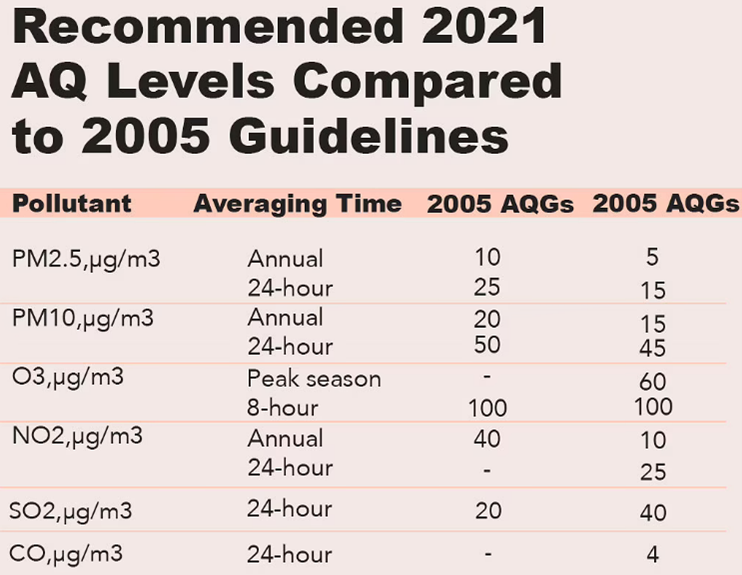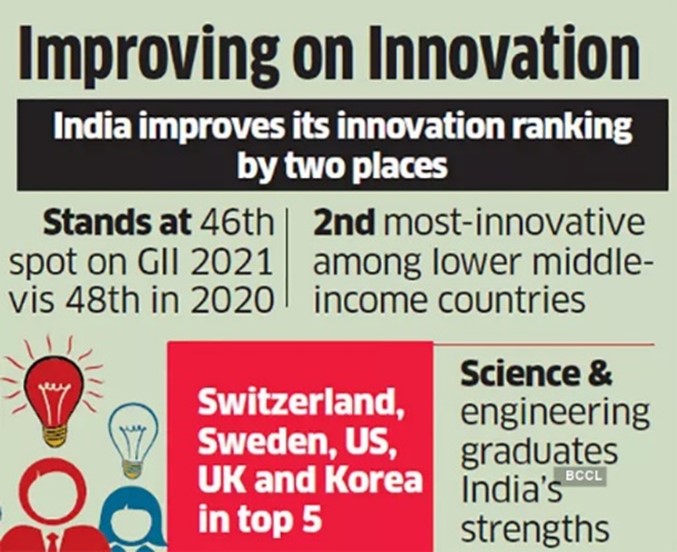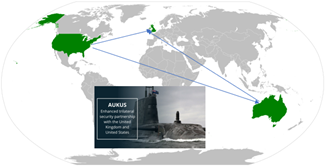Wednesday, 1st September 2021
Leaded Petrol
In news:
Recently, the UNEP has announced that leaded petrol has now been eradicated from the world.
About the news
- While all countries have followed different timelines for the lead phaseout, developing countries, especially those in Africa and a few in Asia have taken the longest time.
- Algeria was the last country to completely eliminate leaded automotive fuel.
- The Partnership for Clean Fuels and Vehicles (PCFV) was established at the World Summit on Sustainable Development in 2002 by the UNEP and a global target for elimination of leaded petrol was set.
- There were several barriers including misinformation around the use of unleaded petrol to challenges of addressing refinery processes and the associated costs.
Why lead was used with Petrol?
- Problem with unleaded lead: Unleaded petrol used to have low octane number which was responsible for “knocking” in an internal-combustion engine.
- Knocking can cause overheating of the spark-plug points, erosion of the combustion chamber surface, rough, inefficient operation and even sever physical damage to engine.
- How lead helped: Lead allowed the development of a higher octane number for fuel which was beneficial for performance, but with several health and environmental hazards.
- Technology to rescue: Thanks to modern refining methods, manufacturers can achieve the octane numbers achieved with leaded petrol without actually needing to add any lead substances.
Why was Phasing out of Leaded petrol started?
- Health Issues: According to the World Health Organization (WHO), lead is toxic, affects multiple body systems and is particularly harmful to young children. It affects the brain, liver, kidneys and bones.
- Lead is measured in blood to understand exposure. Lead in bone is released into blood during pregnancy and becomes a source of exposure to the developing foetus.
- Economic Benefits: Extrapolating from US benefits to global benefits, global annual benefits are estimated at a gross domestic product of $2.44 trillion per year.
- Harms vehicle technology: It has damaging impact on the emissions control systems of vehicles. Evidence has mounted to show that lead in petrol damages the catalytic converters.

Source:
e-Source
News
IIT Madras is developing an online platform called e-Source to tackle e-waste.
About the e-Source Platform
- Supply Chain: Called ‘e-Source,’ it will be an exchange platform that will serve as an online marketplace for Waste Electrical and Electronic Equipment (WEEE) and facilitate a formal supply chain between various stakeholders (buyers and sellers).
- Enabling Circular economy: It aims to make WEEE a key resource in the evolution of a circular economy by establishing traceability and recovery of post-consumer e-waste in the market.
- Technology Used: It will use machine learning for better traceability of e-waste and help increase the opportunities for repair and re-use of e-waste.
- The platform will use a combination of image processing and natural language processing techniques to extract product information and upload it to the database.
- Head of the Initiative: The Indo-German Centre for Sustainability (IGCS) is heading the initiative.
- Benefits: This will potentially improve livelihoods for youth and women in periurban settings by upgrading their skills and improving occupational health and safety, reduce the flow of toxic materials in waste streams and broaden the market for affordable, second-hand e-devices.
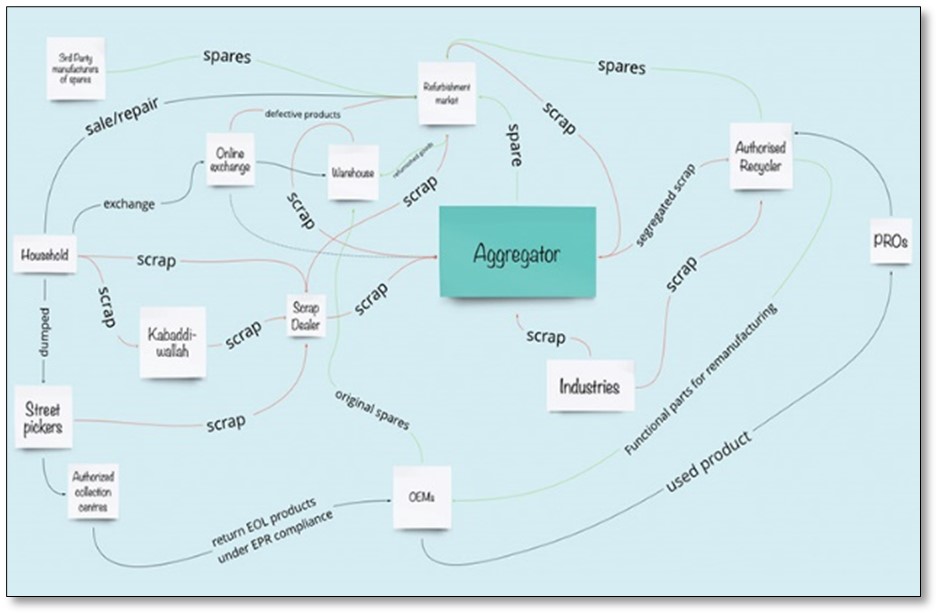
What is the e-waste Issue?
- Global Problem: Currently, the world annually generates 53.6 million tonnes of e-waste, which is expected to double in the next 16 years.
- Indian aspect: India is world’s third largest producer and only 5 percent of e-waste is recycled responsibly in the country.
Source :
Pradhan Mantri Jan-Dhan Yojana (PMJDY)
In News
Recently, the Pradhan Mantri Jan-Dhan Yojana (PMJDY) completed seven years since its launch in the year 2014.
About the Pradhan Mantri Jan-Dhan Yojana (PMJDY):
- Objective: PMJDY is a National Mission that encompasses an integrated approach to bring about comprehensive financial inclusion of all the households in the country.
- Recent Changes: PMJDY program was launched initially for a period of 4 years and was later extended with certain modifications such as:
- Focus shift from ‘Every Household’ to Every Unbanked Adult’.
- RuPay Card Insurance - Free accidental insurance cover on RuPay cards increased from Rs. 1 lakh to Rs. 2 lakh for PMJDY accounts opened after 28.8.2018.
- Enhancement in overdraft facilities - OD limit doubled from Rs 5,000/- to Rs 10,000/-, OD upto Rs 2,000/- (without conditions) and increase in upper age limit for OD from 60 to 65 years.
The Scheme’s Achievements So Far
- PMJDY Accounts: The number of accounts rose to 43.04 crore in August 2021 from 17.9 crore in August 2015. Of this, 55.47% Jan Dhan account holders are women and 66.69% holders are in rural and semi-urban areas.
- Deposits: The deposits have shot up to Rs. 1.46 lakh crore from Rs. 22,901 crore during 2015-2021.
- RuPay Usage: Number of RuPay cards & their usage has also increased over time.
- Jan Dhan Darshak App: This app is being used for identifying villages which are not served by banking touch points within 5 km. The efforts have resulted in a significant decrease in the number of such villages.
- Pradhan Mantri Garib Kalyan Package (PMGKP) for PMJDY Women: Under PMGKP, a total of Rs. 30,945 crore has been credited in accounts of women PMJDY account holders during Covid lockdown.
- Smooth DBT Transactions: About 5 crore PMJDY account holders receive Direct Benefit Transfer from the Government under various schemes.

Source:
- Pradhan Mantri Jan-Dhan Yojana (PMJDY) - National Mission for Financial Inclusion, completes seven years of successful implementation
- PMJDY completes 7 years. Here's how to avail ₹10,000 overdraft facility
- FinMin to banks: Micro insurance, flexi schemes for PMJDYJan-Dhan accounts grew three-fold in seven years
- Pradhan Mantri Jan-Dhan Yojana (PMJDY)
Image source:
Fair and Remunerative Price (FRP)
In News
The Central Government has recently increased Fair and Remunerative Price of sugarcane payable by Sugar Mills for sugar season 2021-22.
About the News
- Fair & remunerative price (FRP) for sugarcane has been increased to ₹290 per quintal for the 2021-22 marketing year (October-September), which will be based on 10% recovery. If recovery is less than 9.5%, then farmers will be given ₹275 per quintal.
- The approval is the highest ever FRP, approved for sugarcane farmers and the decision will benefit 5 crore sugarcane farmers & their dependents, as well as 5 lakh workers employed in sugar mills and related ancillary activities.
What is Fair and Remunerative Price (FRP)?
- The FRP, which is determined under Sugarcane (Control) Order, 1966 of the Essential Commodities Act, 1955, is the minimum price that sugar mills must pay to sugarcane farmers, every year before start of the sugarcane crushing season.
- The FRP is determined on the basis of recommendations of Commission for Agricultural Costs and Prices (CACP), a statutory body that advises the government on the pricing policy for major farm produce, and after consultation with State Governments and other stakeholders.

- Citing differences in cost of production, productivity levels and as a result of pressure from farmers' groups, some states declare state specific sugarcane prices called State Advised Prices (SAP), usually higher than the SMP/FRP.
- Since early 1970s, State Advised Price (SAP) came into existence in States like UP, Tamil Nadu, Punjab, Haryana etc.
What have been the benefits of FRP?
- Payment Security to Farmers: The Sugarcane Control Order mandates that mills have to pay farmers the government declared FRP within 14 days of delivery of cane. This ensures payment surety.
- Surety of payment is the main reason cited by farmers in water-stressed parts of the state to go for sugarcane farming.
- Cushion for Farmers: Under the FRP system, the farmers are not required to wait till the end of the season or for any announcement of the profits by sugar mills or the Government. This assures margins on account of profit and risk to farmers, irrespective of the fact whether sugar mills generate profit or not and is not dependent on the performance of any individual sugar mill.
- Incentivises higher Yield: To ensure that higher sugar recoveries are adequately rewarded and considering variations amongst sugar mills, the FRP is linked to a basic recovery rate of sugar, with a premium payable to farmers for higher recoveries of sugar from sugarcane.
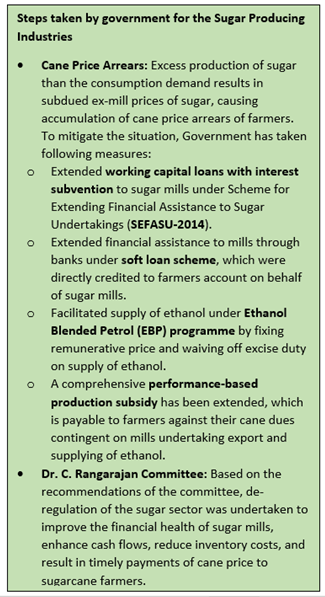
Issues Related to Sugar Pricing in India
- Dual sugarcane pricing: The Centre announces a FRP for sugarcane every season but State governments invariably recommend a higher price, over and above the FRP.
- High SAPs without any linkage with the output price is unviable. Higher SAP than FRP leads to year on year rise in cane price arrears.
- Cost differences: There is huge disconnect between the raw material and product price. This adversely affects the financial health of the sugar factories in times of low sugar prices where the companies have to pay the MSP even though the sugar prices are low.
- Working in silos: The FRPs are not market-based and are priced at artificially inflated levels by governments. This, in turn, puts pressure on the sugar mills who have to purchase the crop from the farmers at these inflated FRPs.
Way Forward
- Revenue Sharing Formula: Government should implement the Revenue Sharing Formula for Sugarcane pricing based on sharing of the revenue generated from sugar and three major primary by-products, namely bagasse, molasses and press mud in sugarcane value chain between the farmers and millers as recommended by the Rangarajan Committee (2012) and NITI Aayog Task Force (2020).
- Address Surplus: Implementing export subsidy, creating a buffer stock of sugar to address the surplus in the market and shoring up domestic sugar prices are immediate requirements, to support the sugar mills.
- Environment and Economy: Government has been encouraging sugar mills to divert excess sugarcane to ethanol, blended with petrol, which not only serves as a green fuel but also saves foreign exchange on account of crude oil import.
- This would address the problem of excess sugarcane as well as delayed payment.
- Realistic Approach: A realistic sugarcane pricing system that balances the needs of farmers and sugar mills is needed. Industry can pay up to 75 per cent of the sugar price for cane and the balance, including the price of bagasse and molasses, are needed for viable operations of the sugar mills.
- Excess as Subsidy: If either the Centre or the State set a higher price, the excess could be paid as subsidy by the government concerned. Delivering subsidy to the farmers directly will be easy as all sugarcane payments are through banks anyway, he said.
Conclusion: Sugar industry is an important agro-based industry that impacts rural livelihood of about 50 million sugarcane farmers and around 5 lakh workers directly employed in sugar mills. Employment is also generated in various ancillary activities relating to transport, trade servicing of machinery and supply of agriculture inputs. So, rationalisation of sugar cane pricing and liberalisation of sugar trade needs to be introduced in a calibrated and phased manner.
Question: Explain the mechanism of FRP and its benefits. What are the issues related to this mechanism?
Sources:
- Government approves determination of Fair and Remunerative Price of sugarcane payable by Sugar Mills for sugar season 2021-22
- After NITI Aayog, agri panel CACP recommends FRP payment to sugar cane growers in instalments
- Need for a realistic sugarcane pricing system
- Cabinet approves highest ever FRP for sugarcane farmers
- Cabinet okays increase in sugarcane FRP by Rs 10 to Rs 285/qtl for 2020-21
- Explained: Why sugarcane prices have been static for 4 years in Punjab
- Minimum Support Price
- The Current Sugarcane Pricing Policy & its Critical Analysis
- SUGARCANE PRICING POLICY
- Sugar and SugarCane Policy
Indian Standard Time (IST)
On 1 September, 1947, India first adopted Indian Standard Time (IST), the official time for the entire country. IST is observed across India, with an offset of five and a half hours ahead of Greenwich Mean Time (GMT). Indian Standard Time is adopted from the 82.5 degrees East longitude, the approximate location of a clock tower in Mirzapur near Allahabad and closest to the corresponding longitude reference line.
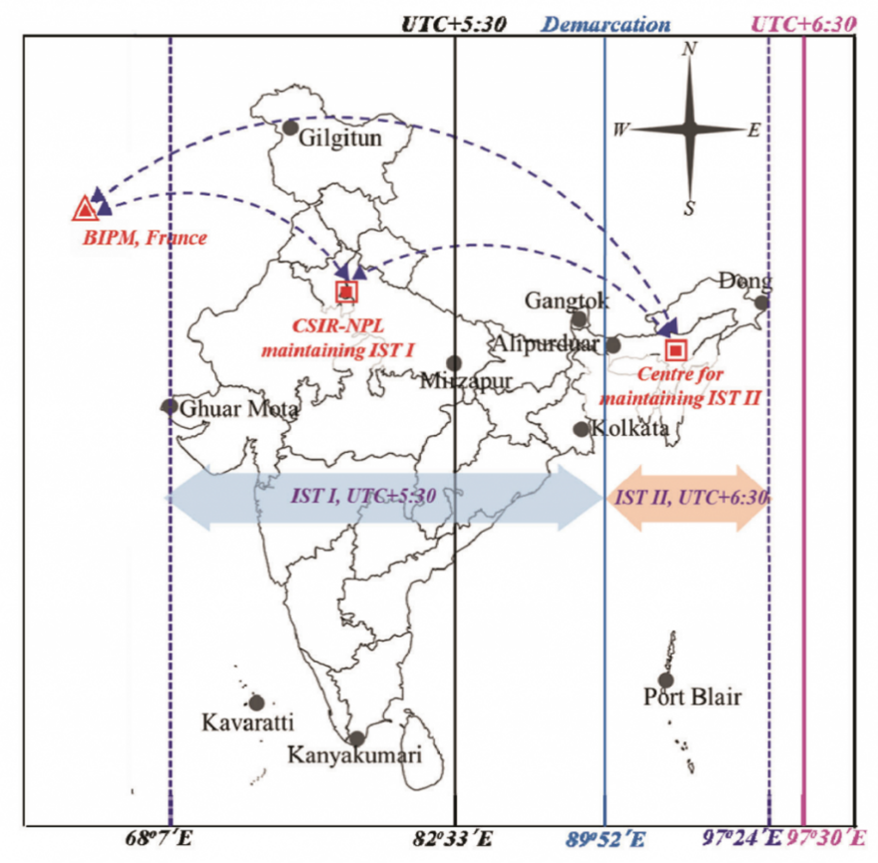
Sources:
- Seventy Years Ago, India First Adopted Indian Standard Time (IST) On This Day In 1947
- Two Timezones in India Could Make Country’s Northeast More Productive: Study
Source:
Miyawaki-style urban forest
This is the image of saplings that will be planted by the Rotary Club of Bombay, to create "a Miyawaki-style urban forest" and "a Nakshatra Garden. The Miyawaki method is named after Japanese botanist Akira Miyawali, who, in the 1980s, turned small plots of land into tiny forests by planting trees close to each other. A Nakshatra Garden, on the other hand, combines astrology, ayurveda, botany and landscaping.
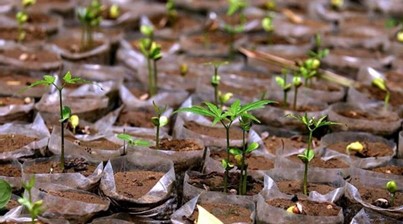
Source:
Financial Stability and Development Council (FSDC)
- Context: The finance minister has called a meeting of FSDC to design a strategy for recovery of the pandemic-hit economy.
- FSDC is an apex level forum set up in 2010 by the Ministry of Finance to strengthen and institutionalize the mechanism for maintaining financial stability, enhancing inter-regulatory coordination, and promoting financial sector development.
- It intends to monitor macro-prudential supervision of the economy and assess the functioning of the large financial conglomerates.
- The Raghuram Rajan committee (2008) on financial sector reforms first proposed the creation of FSDC.
- The finance minister is the Chairman of the council and its members include the heads of financial sector Regulators (RBI, SEBI, PFRDA, IRDA & FMC), Secretaries of Finance, Economic Affairs, Financial Services, and the Chief Economic Adviser.

Source:
- Financial Stability and Development Council (FSDC)
- FSDC to meet on Sep 3; to take stock of economy, financial sector
Image source:
Dima Hasao
- Context: A suspected militant attack has left five truckers dead in Assam’s Dima Hasao hill district.
- Dima Hasao (earlier North Cachar Hills) is one of the three hill districts of Assam.
- It is an administrative district that falls under the North Cachar Hills Autonomous Council one of the three autonomous councils set up under the provisions of the VIth Schedule of the Indian Constitution (that allows for greater political autonomy and decentralised governance in certain tribal areas of the Northeast), the other two being the Karbi Anglong Autonomous Council and Bodoland Territorial Council.
- The district is bounded on the east by Nagaland and Manipur, in the south by the Barak Valley districts, in the west by Meghalaya and in the north by the districts of Hojai and East & West Karbi Anglong.
- It is a tribal-majority district with tribals constituting about 71% of the total population along with a significant number of non-tribal groups like Bengali, Nepali and Assamese.
- The district has a long history of insurgency by Dimasa groups (earliest known rulers and settlers of Assam) which was rooted in a core demand of statehood.
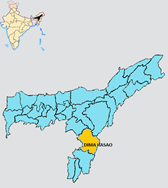
Source:
Image source:
Sukhet Model
- Context: An initiative called ‘Sukhet Model” has been adopted by Dr Rajendra Prasad Agriculture University, Madhubani, Bihar to check pollution.
- Sukhet Model is named after Sukhet village in Madhubani district of Bihar.
- Under the project, garbage and dung from houses are collected door-to-door and then converted into vermicompost (organic manure).
- From the income generated from the sale of organic manure, every family is provided LPG cylinders every two months in exchange of the waste and cow dung.
- The project provides employment to people in the village besides giving an impetus to the Swatch Bharat campaign and providing benefits to farmers.
- The model had a four-fold benefit like:
- Pollution free environment in villages
- Disposal of waste in villages
- Monetary assistance to villagers for gas cylinders and
- Availability of organic fertilizers to farmers.
- The Sukhet Model was launched by the agricultural department as part of the climate resilient agricultural programme in 2019.
Source:
- PM Modi lauds Sukhet Model to check pollution in Madhubani villages
- Mann Ki Baat: PM Modi hails ‘Sukhet’ Model of Madhubani
Image source:
Vaccinated Travel Lane (VTL)
- Context: Singapore has established VTLs for vaccinated travellers.
- VTLs are an extension of travel corridors only for those travellers who have been fully vaccinated.
- Singapore has established VTLs with Germany and Brunei Darussalam allowing fully vaccinated passengers from these two places to arrive in Singapore for any travel purpose without quarantine requirements, which are otherwise mandatory for those flying to Singapore.
- Singapore will designate specific flights with the country on the other side of the lane only for passengers having a Vaccinated Travel Pass (VTP) issued by the Singapore government.
- To apply for a VTP, travellers must be fully vaccinated -an individual will be considered fully vaccinated 14 days after they have received the full regimen of a vaccine authorized by WHO for emergency use. This includes the Serum Institute of India’s Covishield.
Source:
Image source:
New travel arrangement for fully-vaccinated visitors from Germany, Brunei from 8 Sept
As states roll out NEP, address its twin deficits
Essence: The twin deficits of the National Education Policy (NEP) are it did not mention Muslims and did not pay the needed attention to the use of English language. The omission of Muslims who lag behind SCs and STs in education will hamper NEPs goal to provide 15 years of quality education to all Indians. The pedagogical initiatives related to English as a subject and a medium of instruction were missing in NEP. To stop the decline in the enrollment in government schools and to promote teaching in mother tongue (NEP recommendation), there is a need to improve the teaching of English subject in government schools.
Why you should read this article?
- To understand the twin deficits of the NEP.
- To understand the need to rectify these deficits to achieve the goals of NEP.
- To know about the reforms that are needed to overcome these omissions.
Source:
It’s time to build BRICS better
Essence: The article talks about the forthcoming 13th BRICS summit which will be on September 9 under India’s chairmanship. A great significance of this upcoming summit is the digital format in which this session will be held. The article mentions important metrics about BFRICS i.e., it represents 42% of the world’s population, 30% of the land area, 24% of global GDP, and 16% of international trade. There is mention about the top four priorities in the context of BRICS. The topmost being to pursue reform of multilateral institutions ranging from the United Nations, World Banks and the IMF, and WTO. The second priority is combatting terrorism. Among other concerns, BRICS has been busy deepening trade and investment ties among its member states. Among other concerns, BRICS has been busy deepening trade and investment ties among its member states and also striving to serve as a bridge between the Global North and Global South
Why you should read this article?
- To understand the idea of BRICS as a common pursuit of shared interests by the five emerging economies from four continents.
- To understand and know about the four major priorities of the upcoming BRICS summit and their importance.
It’s time to build BRICS better
Article link :
Digitalization’s dark side
Essence: Digital revolution have increasingly reshaped people’s perceptions because of its benefits several benefits. But recent rise of digital technologies due to COVID-19 pandemic has started revealing several “dark sides” which needs to be addressed soon. As large exploitation of resources and huge generation of electronic waste (e-waste) to meet the growing demand of modern digital technologies leading increased AI’s digital footprint, hugely damaging the environment. These approximations of carbon footprint of digitalisation underline the need to tackle the environmental externalities in order to capture the full potential of the digital economy and to survive the 21st century.
Why should you read this article?
- To know the benefits as well as dark sides of digitalization.
- To understand reasons how modern digital technologies are damaging the environment.
To know what possible steps we should take to tackle the same
Source:
Gender Equality: Lessons from Norway
Background
- Even after continuous efforts to bring gender equality, a number of challenges to gender equality remains in India and new gender issues keeps surfacing
- India can take some innovative initiatives taken by Norway.
Initiatives by Norway
- The Norwegian strategy to achieve gender equality includes both gender mainstreaming and gender specific actions.
- Statutory Support: The Equality and Anti-Discrimination Act, whose role is to promote equality and prevent discrimination is seen as a key instrument.
- Role of Civil Society: The gender equality policies that has been integrated into different policy areas, the international gender equality regime and the role of the civil society.
Lesson to learn
- Efforts are needed to strengthen the gender equality in other parts of the world especially in developing countries.
- Need to strengthen the role of civil society to achieve any social reforms.
- Act and rules formulated to achieve any social reforms should cater to the culture of the society to bring maximum results.
Quote:
“Culture does not make people. People make culture. If it is true that the full humanity of women is not our culture, then we can and must make it our culture.” - Chimamanda Ngozi Adichie
Where it can used:
- GS Paper 1- Role of Women and Women’s Organization, Social Empowerment
- GS Paper 2- Issues Relating to Development and Management of Social Sector, Role of Civil Services in a Democracy.
- GS Paper 4- Ethics and Human Interface
Source:
Share the article
Get Latest Updates on Offers, Event dates, and free Mentorship sessions.

Get in touch with our Expert Academic Counsellors 👋
FAQs
UPSC Daily Current Affairs focuses on learning current events on a daily basis. An aspirant needs to study regular and updated information about current events, news, and relevant topics that are important for UPSC aspirants. It covers national and international affairs, government policies, socio-economic issues, science and technology advancements, and more.
UPSC Daily Current Affairs provides aspirants with a concise and comprehensive overview of the latest happenings and developments across various fields. It helps aspirants stay updated with current affairs and provides them with valuable insights and analysis, which are essential for answering questions in the UPSC examinations. It enhances their knowledge, analytical skills, and ability to connect current affairs with the UPSC syllabus.
UPSC Daily Current Affairs covers a wide range of topics, including politics, economics, science and technology, environment, social issues, governance, international relations, and more. It offers news summaries, in-depth analyses, editorials, opinion pieces, and relevant study materials. It also provides practice questions and quizzes to help aspirants test their understanding of current affairs.
Edukemy's UPSC Daily Current Affairs can be accessed through:
- UPSC Daily Current Affairs can be accessed through Current Affairs tab at the top of the Main Page of Edukemy.
- Edukemy Mobile app: The Daily Current Affairs can also be access through Edukemy Mobile App.
- Social media: Follow Edukemy’s official social media accounts or pages that provide UPSC Daily Current Affairs updates, including Facebook, Twitter, or Telegram channels.

